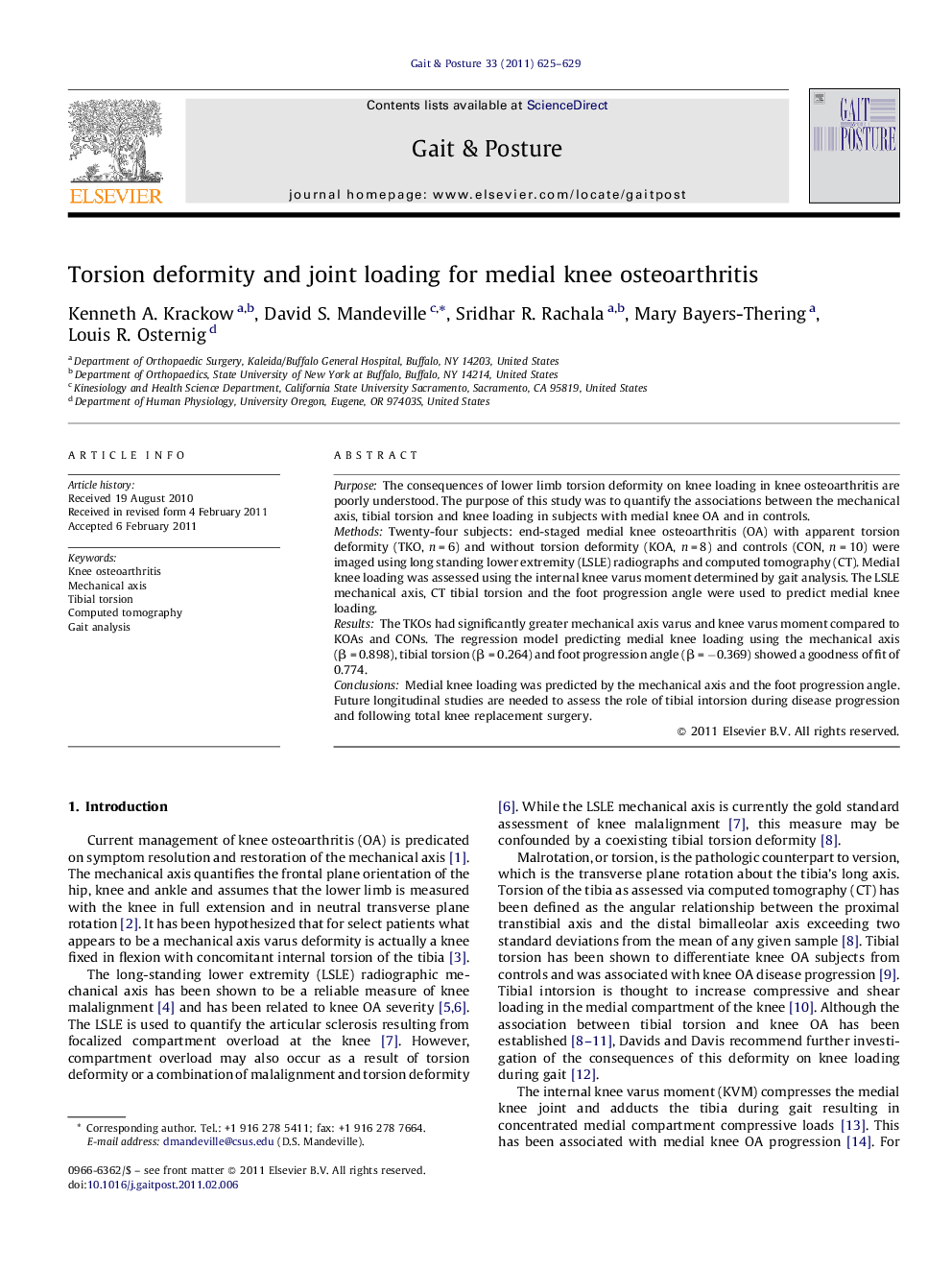| کد مقاله | کد نشریه | سال انتشار | مقاله انگلیسی | نسخه تمام متن |
|---|---|---|---|---|
| 6207178 | 1265655 | 2011 | 5 صفحه PDF | دانلود رایگان |

PurposeThe consequences of lower limb torsion deformity on knee loading in knee osteoarthritis are poorly understood. The purpose of this study was to quantify the associations between the mechanical axis, tibial torsion and knee loading in subjects with medial knee OA and in controls.MethodsTwenty-four subjects: end-staged medial knee osteoarthritis (OA) with apparent torsion deformity (TKO, n = 6) and without torsion deformity (KOA, n = 8) and controls (CON, n = 10) were imaged using long standing lower extremity (LSLE) radiographs and computed tomography (CT). Medial knee loading was assessed using the internal knee varus moment determined by gait analysis. The LSLE mechanical axis, CT tibial torsion and the foot progression angle were used to predict medial knee loading.ResultsThe TKOs had significantly greater mechanical axis varus and knee varus moment compared to KOAs and CONs. The regression model predicting medial knee loading using the mechanical axis (β = 0.898), tibial torsion (β = 0.264) and foot progression angle (β = â0.369) showed a goodness of fit of 0.774.ConclusionsMedial knee loading was predicted by the mechanical axis and the foot progression angle. Future longitudinal studies are needed to assess the role of tibial intorsion during disease progression and following total knee replacement surgery.
Journal: Gait & Posture - Volume 33, Issue 4, April 2011, Pages 625-629